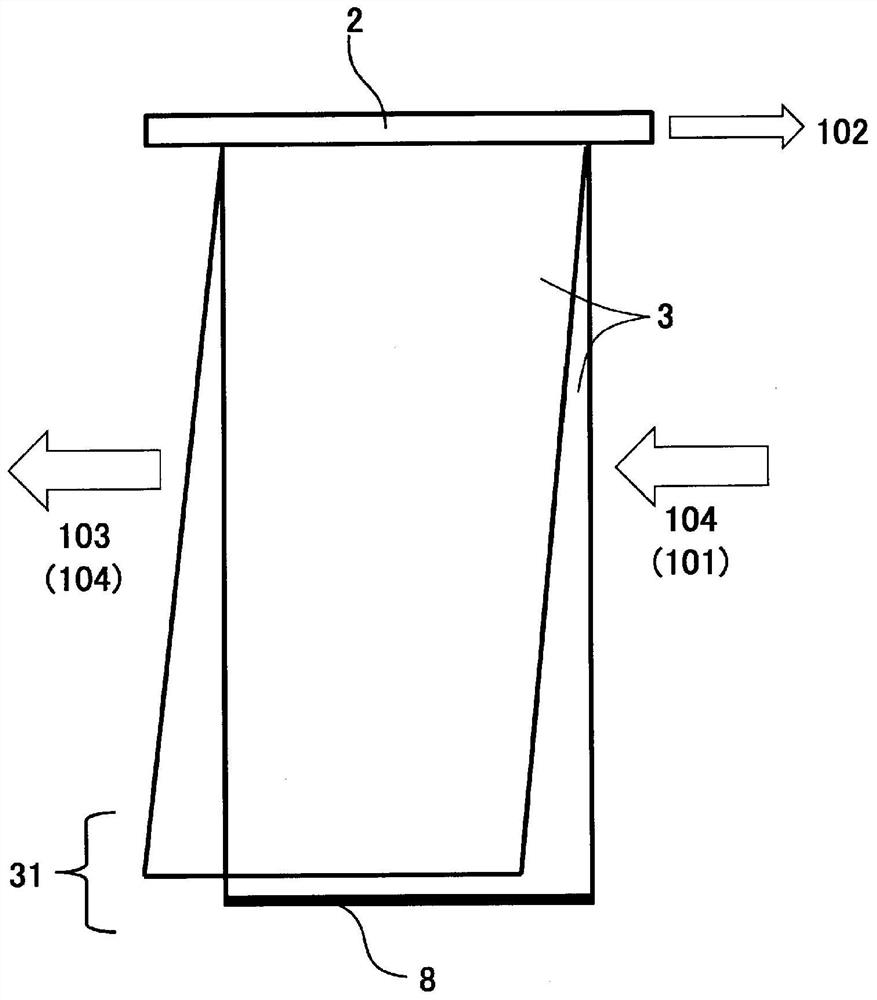Separation membrane element
A separation membrane and element technology, applied in the field of separation membrane elements, can solve the problems of reduced fluid permeability, separation performance, increased membrane surface concentration, and reduced membrane surface turbulent effect, achieving increased and suppressed membrane surface turbulent effects Effects of concentration polarization, maintenance of fluid permeability and separation performance
- Summary
- Abstract
- Description
- Claims
- Application Information
AI Technical Summary
Problems solved by technology
Method used
Image
Examples
Embodiment 1
[0152] At room temperature (25°C), a nonwoven fabric composed of polyethylene terephthalate fibers (filament diameter: 1 dtex, thickness: about 0.09 mm, density 0.80 g / cm 3 ) to a thickness of 180 μm by adding a N,N-dimethylformamide solution containing 15.2% by mass of polysulfone, immediately immersing it in pure water for 5 minutes, and then immersing it in warm water at 80°C for 1 minute. A porous support layer (thickness of 0.13 mm) composed of a fiber-reinforced polysulfone support layer.
[0153] Then, the porous support layer was unwound from a roll, immersed in an aqueous solution containing m-PDA of 3.8 mass % for 2 minutes, the support layer was slowly lifted in the vertical direction, and nitrogen gas was blown through an air nozzle to remove excess from the surface of the support layer. Then, the n-decane solution containing 0.175% by mass of tribenzoyl chloride was applied to completely wet the surface, and it was left to stand for 1 minute. Next, in order to re...
Embodiment 2
[0159] A separation membrane element was produced and performance was evaluated in the same manner as in Example 1, except that the number of separation membrane pairs was 5, and the number of separation membrane pairs was changed to 3 pairs of I-type separation membranes and 2 pairs of inverted L-type separation membranes. The results are shown in Table 1.
Embodiment 3
[0161] A separation membrane element was produced in the same manner as in Example 1, except that the number of separation membrane pairs was changed to 3 pairs of I-type separation membranes and one pair of inverted L-type separation membranes, and the performance was evaluated. The results are shown in Table 1.
PUM
| Property | Measurement | Unit |
|---|---|---|
| thickness | aaaaa | aaaaa |
| compressive modulus | aaaaa | aaaaa |
| thickness | aaaaa | aaaaa |
Abstract
Description
Claims
Application Information
 Login to View More
Login to View More - R&D
- Intellectual Property
- Life Sciences
- Materials
- Tech Scout
- Unparalleled Data Quality
- Higher Quality Content
- 60% Fewer Hallucinations
Browse by: Latest US Patents, China's latest patents, Technical Efficacy Thesaurus, Application Domain, Technology Topic, Popular Technical Reports.
© 2025 PatSnap. All rights reserved.Legal|Privacy policy|Modern Slavery Act Transparency Statement|Sitemap|About US| Contact US: help@patsnap.com



